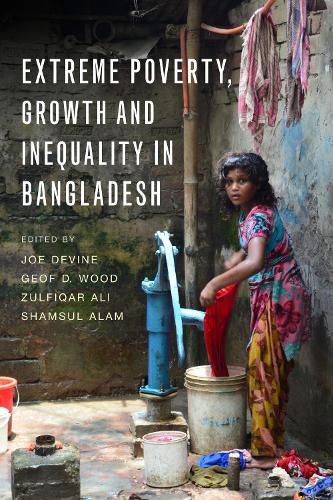Readings Newsletter
Become a Readings Member to make your shopping experience even easier.
Sign in or sign up for free!
You’re not far away from qualifying for FREE standard shipping within Australia
You’ve qualified for FREE standard shipping within Australia
The cart is loading…






This title is printed to order. This book may have been self-published. If so, we cannot guarantee the quality of the content. In the main most books will have gone through the editing process however some may not. We therefore suggest that you be aware of this before ordering this book. If in doubt check either the author or publisher’s details as we are unable to accept any returns unless they are faulty. Please contact us if you have any questions.
Over the past two decades, Bangladesh has enjoyed impressive economic growth rates and is now poised to become an upper Middle Income Country. Over the same period, the country has made considerable progress in reducing official poverty levels and in meeting its MDG targets. Despite this success, Bangladesh still has a sizeable proportion of its population living in poverty or extreme poverty; and it continues to see levels of inequality steadily rising. Furthermore Bangladesh remains one of the most climate-vulnerable countries in the world, with millions living in low-lying areas at risk from catastrophic flooding. This book is unique in that it focuses on extreme poverty. It brings together contributions from both academics and policy makers to address fundamental questions such as what difference does it make if we talk of extreme poverty as opposed to other more moderate forms of poverty? Should we define and characterize extreme poverty in terms of per capita income, social exclusion, welfare entitlements, intergenerational transfers, employment opportunities, gender and within household dynamics, spatial variations and mobility? How does a focus on extreme poverty challenge policy making and decisions? Bangladesh is on the brink of making real and sustainable in-roads on extreme poverty. To achieve this, it will need a new growth path that is more inclusive and redistributive, and will have to introduce innovative policies that are nuanced, blended and sustained. The book draws on empirical data and evidence to identify key priorities that can inform policy able to engage with extreme poverty. This book is essential reading for policy makers, civil society and donor staff, researchers and students from Bangladesh and beyond who are interested in understanding extreme poverty and how it can be eliminated.
$9.00 standard shipping within Australia
FREE standard shipping within Australia for orders over $100.00
Express & International shipping calculated at checkout
This title is printed to order. This book may have been self-published. If so, we cannot guarantee the quality of the content. In the main most books will have gone through the editing process however some may not. We therefore suggest that you be aware of this before ordering this book. If in doubt check either the author or publisher’s details as we are unable to accept any returns unless they are faulty. Please contact us if you have any questions.
Over the past two decades, Bangladesh has enjoyed impressive economic growth rates and is now poised to become an upper Middle Income Country. Over the same period, the country has made considerable progress in reducing official poverty levels and in meeting its MDG targets. Despite this success, Bangladesh still has a sizeable proportion of its population living in poverty or extreme poverty; and it continues to see levels of inequality steadily rising. Furthermore Bangladesh remains one of the most climate-vulnerable countries in the world, with millions living in low-lying areas at risk from catastrophic flooding. This book is unique in that it focuses on extreme poverty. It brings together contributions from both academics and policy makers to address fundamental questions such as what difference does it make if we talk of extreme poverty as opposed to other more moderate forms of poverty? Should we define and characterize extreme poverty in terms of per capita income, social exclusion, welfare entitlements, intergenerational transfers, employment opportunities, gender and within household dynamics, spatial variations and mobility? How does a focus on extreme poverty challenge policy making and decisions? Bangladesh is on the brink of making real and sustainable in-roads on extreme poverty. To achieve this, it will need a new growth path that is more inclusive and redistributive, and will have to introduce innovative policies that are nuanced, blended and sustained. The book draws on empirical data and evidence to identify key priorities that can inform policy able to engage with extreme poverty. This book is essential reading for policy makers, civil society and donor staff, researchers and students from Bangladesh and beyond who are interested in understanding extreme poverty and how it can be eliminated.